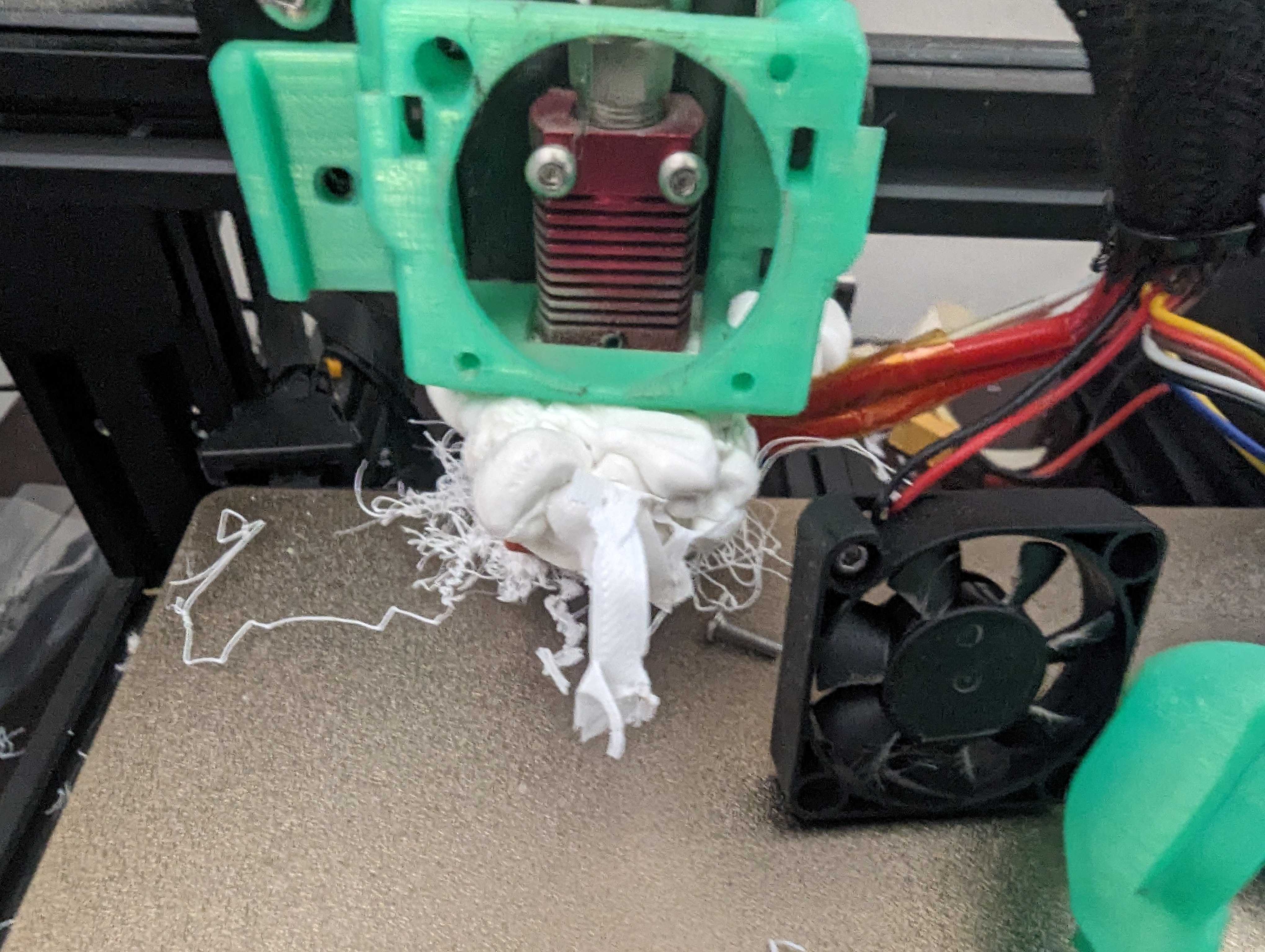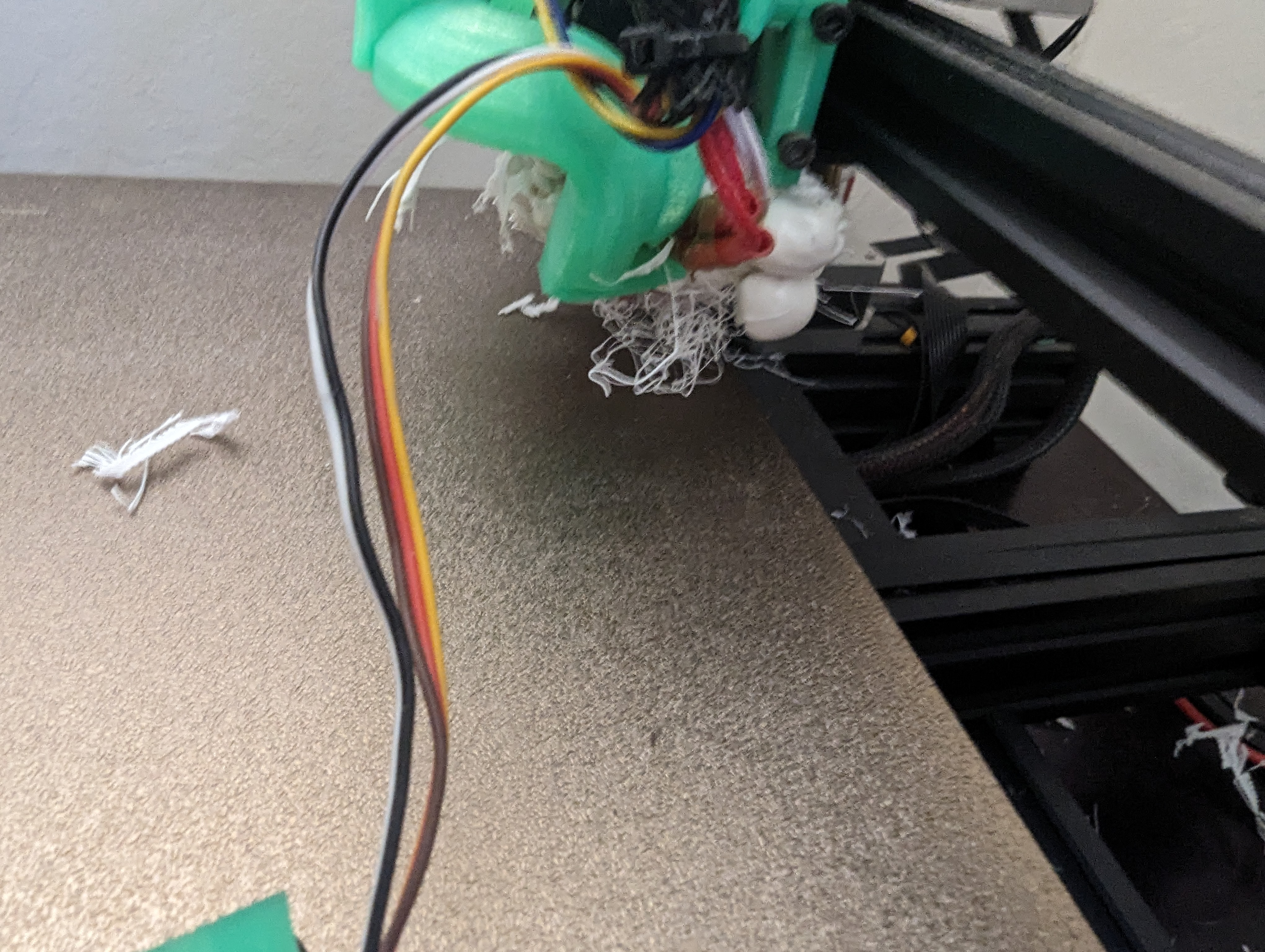Honestly, if you just throw the whole hot end assembly (all electric components detached) in the oven at a low temp you'll probably be able to rip the whole blob off in one chunk and keep using it. Unless any cabling got damaged (entirely possible) I doubt anything is actually broken.
And at that point it’s probably time to get a new thermistor and cartridge anyway
Eh, not necessarily. Like I said before, the cables are really the only things you need to worry about in that area. When you consider how each of the components works, it makes it seem less damaging.
The heat cartridge is just two cables touching together inside a porcelain and metal housing that gets hot.
The thermistor is just two cables slightly air gapped inside another porcelain and metal housing to provide varying resistance depending on temperature.
Neither of these components will care if a huge blob of plastic temporarily adheres itself to the housing, so long as the cables remain intact.
I just meant that they are generally wear/replace items so it’s easy to replace them and relatively cheap to do it.
I see, fair advice
My worry is stripped threads and, in even if not, I think it's probably about time to let the poor thing retire (until I repurpose it into a filament extruder). It's served me far better than I expected.
I would suggest setting your hot end to 80-90 degrees. At that temp, PLA becomes rubbery and pliable without being a melty burned out mess. You can then clip and remove the blob with care and proceed with breaking it down.
For other types of filament, you want to be just above the glass transition temperature and below the melting point. (usually it's a bit above your heated bed temperature.)
I'm not sure what you mean by stripped threads. Metal is stronger than plastic, there's nothing the PLA blob can do to cause physical damage to your hot end besides damaging cables. And I don't know what threads would be exposed to even be damaged.
I mean if you're wanting to buy a new hotend by all means get one, but don't do so thinking you have to because of this. I almost wanna guarantee everything still works as long as your cables are intact.
Metal is stronger than plastic,
True but, with pressure, water can cut metal. I'll be heat softening it with my PCB toaster oven to see if I can recover it. If it's just a leak, and no electrical damage, as you mention, it's probably ok.
Probably, I'll still get a new hotend, even if there's no breakage because I think that the PTFE feed tube is a bit of a weak link.
I'd call that a leak rather than a clog. :)
3DPrinting
3DPrinting is a place where makers of all skill levels and walks of life can learn about and discuss 3D printing and development of 3D printed parts and devices.
The r/functionalprint community is now located at: or !functionalprint@fedia.io
There are CAD communities available at: !cad@lemmy.world or !freecad@lemmy.ml
Rules
-
No bigotry - including racism, sexism, ableism, homophobia, transphobia, or xenophobia. Code of Conduct.
-
Be respectful, especially when disagreeing. Everyone should feel welcome here.
-
No porn (NSFW prints are acceptable but must be marked NSFW)
-
No Ads / Spamming / Guerrilla Marketing
-
Do not create links to reddit
-
If you see an issue please flag it
-
No guns
-
No injury gore posts
If you need an easy way to host pictures, https://catbox.moe may be an option. Be ethical about what you post and donate if you are able or use this a lot. It is just an individual hosting content, not a company. The image embedding syntax for Lemmy is 
Moderation policy: Light, mostly invisible


